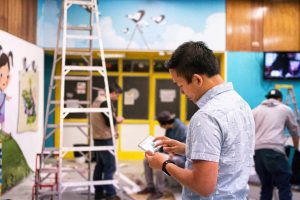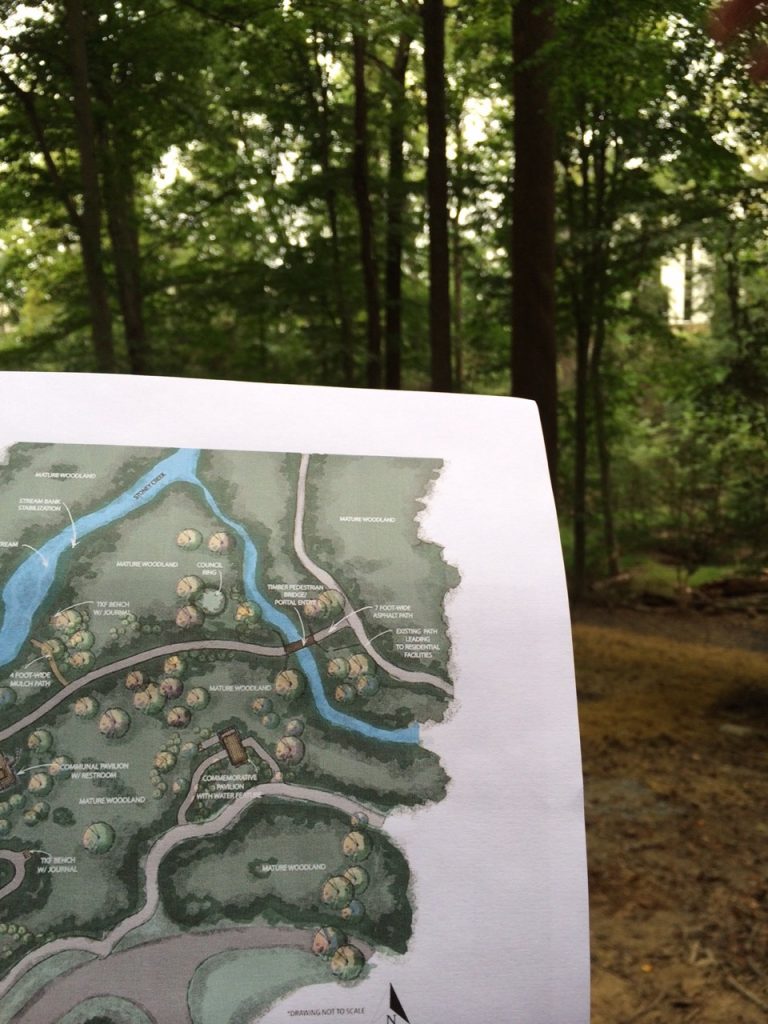Archive for the ‘Hospital’ Category
COANIQUEM – Safe Niños Part 2
On my third meeting with the students, a small core of three teams remained, each continuing the project through a second term. Each team presented their projects that had matured and were ready to take back to Chile to install. The first student, Alvin, presented the story and animal characters his team had created to help guide the children through the magic land through which they would be “flying” as they went on their healing journey. 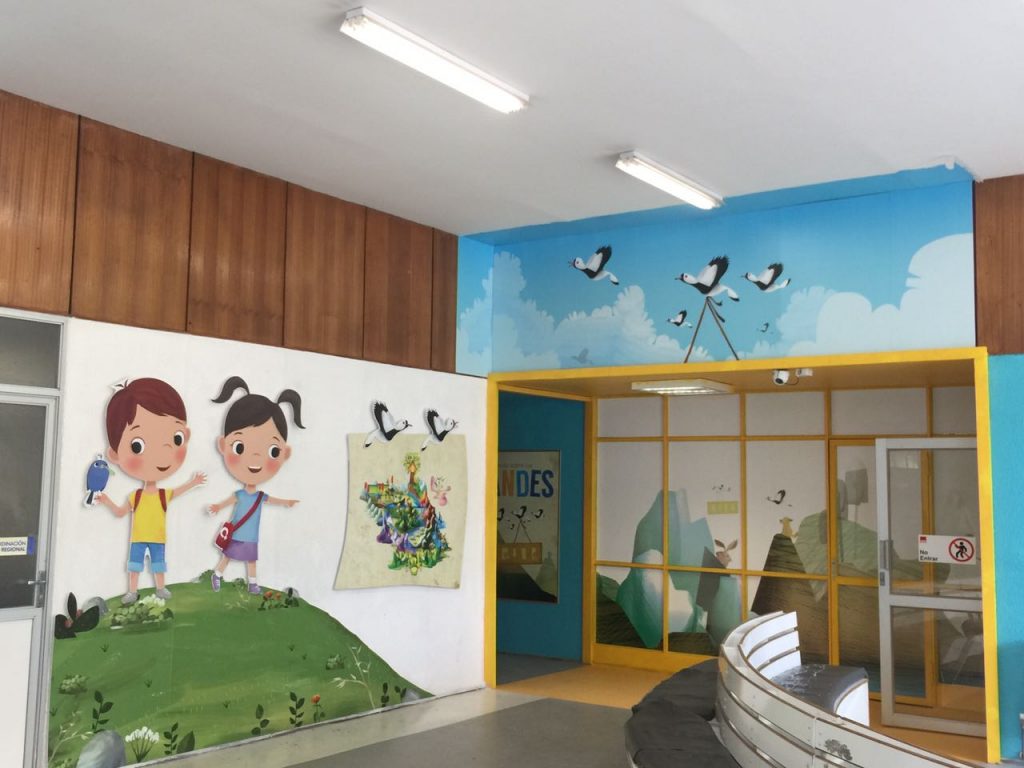 The land, complete with a colorful map that resembled a cross between Middle Earth and Candy Land, was, like Chile – long and narrow, flanked with whimsical mountains peopled by the trees and animals of Chile.
The land, complete with a colorful map that resembled a cross between Middle Earth and Candy Land, was, like Chile – long and narrow, flanked with whimsical mountains peopled by the trees and animals of Chile.  The waiting room was to be the entrance to this magical kingdom, and the doors leading to treatment rooms along the long hallways were to be decorated with charming animal characters inviting the young patients in. There was even a passport that the children and their families would receive when they arrived in the waiting room, to be stamped in every treatment room when they received their compression garments, physio- or occupational therapy.
The waiting room was to be the entrance to this magical kingdom, and the doors leading to treatment rooms along the long hallways were to be decorated with charming animal characters inviting the young patients in. There was even a passport that the children and their families would receive when they arrived in the waiting room, to be stamped in every treatment room when they received their compression garments, physio- or occupational therapy.
Then students Behnia and Anna presented their solution to motivate the teens, who had been returning to the clinic for years for multiple treatments: a “Teen Zone” flanked by mural-painted shipping containers that were already being used for storage on the site. The area would be covered with colorful sail shades and was made attractive to teens with a dance area and hammocks.
Finally, Nicholas and Dave presented their low and hi tech brightly colored “toys,” designed to help the children participate in physio- and occupational therapy treatments to increase mobility and activity, and reduce stress. The design challenge that they were solving was how to provide the therapists measureable feedback on the progress of treatment, while motiving the kids with musical and visual feedback.
It was a remarkable display, accomplished over a few short months. The passion of the students shone through. An added benefit: the project had inspired the staff, the patients, and their families with pride for COANIQUEM and its cutting edge treatments, giving them happiness and hope for healing, even before the projects were installed. Then, to top it off, one of the students – Alvin, won a grant to complete his project and fly back to Chile to install it, launching his career while doing good in the world. What better outcome could there be!
The “Green Road”: Healing wounds of war with nature, Part 1
After the young service woman in full Navy camo cleared me for base access at the Visitor’s Entrance check-point, she pointed to the familiar white art deco tower of what used to be called the Bethesda Navy Hospital.“Just head up there, turn left and head straight to the USO. It’s a long walk,” she cautioned.
As I started my trek up the hill I felt anxious, not knowing exactly where I was going. But as soon as I saw a small printed sign by the edge of the road festooned with a green ribbon, I smiled. Finding my way to the site would be like a scavenger hunt!
I was at the Walter Reed National Military Medical Center military base in Bethesda, Maryland, for the opening of the “Green Road” Project. It had been 5 years in the making. The goals: to retrofit a branch of the Rock Creek that flows through the base, make it ADA accessible for wheelchairs and anyone with difficulty walking, and create a healing forest glen where wounded warriors and their families could gather and find respite while being treated at the many hospitals on base.
I had been involved in the project from the start, having advised the CEO and founder of the TKF Foundation and his Board on the most impactful way to dispose of the Foundation’s funds as they searched for a way to sunset it. Up until that time the Foundation had built hundreds of healing, sacred nature spaces throughout Maryland and the mid-Atlantic region. They wanted to use their remaining funds to build a smaller number of gardens that would have greater national impact. They had asked me, and a group of experts, to advise them on how to accomplish that.
I had been working with Capt. Fred Foote, a retired Navy doc, at the then Bethesda Naval Hospital. As he worked to bring holistic mind-body integrative treatments into the armamentarium of military medical care, he dreamed of creating a healing forest glen as a sanctuary for service personnel and their families. It was a no-brainer, I thought – put him together with TKF to do it. Building this nature sanctuary at the nation’s flagship medical center – the one where Presidents are treated – would be sure to have tremendous national impact.
As I picked my way along the base’s busy urban street, past the hospital’s main entrance, a continuous stream of trucks and cars passed by, leaving behind their smells of exhaust and diesel. Loud machinery noises filled the air – constant humming emanating from whole buildings filled with heating and air conditioning equipment for the base; jack-hammering and clangs of construction equipment. The sidewalk was sloped and there were many streets to cross. I couldn’t imagine how anyone in a wheel chair or on crutches could navigate this route without stress, twice daily to and from their living quarters to the hospital.
To be continued…
Lasting Art, Part 3: The Work Continues
A few days after I returned to Burlington, Vermont from the Susan Sebastian event at the Southern Vermont Art Center (Part 1, Part 2), I sat down for coffee with Gil Myers, a retired attorney who had set up and now manages the Foundation. He had been a longtime friend of Susan Sebastian’s mother, Elise Braun. He had suggested we meet at a coffee house across from the Court House in downtown Burlington. A small man with white hair and twinkly eyes, he carried a gnarled wooden country walking stick, much like Gandalf or Sam Gamgee might have done in Lord of the Rings.  Self effacing and humble, he downplays his central role in carrying through Susan Sebastian’s dying wish, to install original art in every patient room in every hospital in Vermont. At first Elise Braun was the moving force, he recounted, but after they had completed placing art in three hospitals, Elise fell ill and Myers was the one who carried the project through to its completion. Nonetheless, he insisted throughout that it was not his but Elise’s achievement – he was simply the instrument who completed the task. As he told me – “that’s what lawyers do.”
Self effacing and humble, he downplays his central role in carrying through Susan Sebastian’s dying wish, to install original art in every patient room in every hospital in Vermont. At first Elise Braun was the moving force, he recounted, but after they had completed placing art in three hospitals, Elise fell ill and Myers was the one who carried the project through to its completion. Nonetheless, he insisted throughout that it was not his but Elise’s achievement – he was simply the instrument who completed the task. As he told me – “that’s what lawyers do.”
Myers shared with me more of Elise Braun’s character and spirit. “She was such a vital person,” he recalled, “she radiated vitality and energy.” At one time Elise, her husband, and her daughter Susan had lived in Stowe, Vermont. They used to attend an Episcopal Church about two miles up the Mountain road from the Village, near the Stowe Ski area.
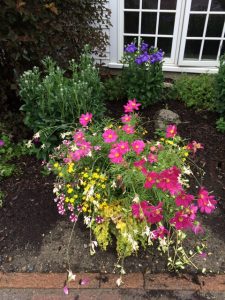 The day I went to visit, the mist alternated with rain, and the little garden bloomed bright. Elise had noticed that many of the older congregants had difficulty getting to church. So she went to school and trained to become an Episcopal Deacon, in order to minister to those unable to attend. As much as book-learning and helping others, she loved outdoor sports – she and her husband used to figure skate in winter and hike in summer.
The day I went to visit, the mist alternated with rain, and the little garden bloomed bright. Elise had noticed that many of the older congregants had difficulty getting to church. So she went to school and trained to become an Episcopal Deacon, in order to minister to those unable to attend. As much as book-learning and helping others, she loved outdoor sports – she and her husband used to figure skate in winter and hike in summer.
Myers too was a sportsman – a fly fisherman. I asked if he had stopped by the Orvis store and headquarters in Manchester, Vermont, just a short drive from the Southern Vermont Art Center where the Susan Sebastian event had been held. He smiled and launched into a wonderful story about a friend who had taught one of the Rockefeller women fly-fishing. In thanks, she sent the friend a silver-handled hand-made bamboo Orvis fly-fishing rod, engraved with his name and thanks for having taught her the sport. Now that’s a great fishing story!
Myers is now occupied with disbursing the remaining Susan Sebastian Foundation funds to help the Vermont Respite House – the only one of its kind in Vermont, adding artwork to their patient rooms. The work continues even after Susan Sebastian and Elise Braun’s passing.
When so much bad is happening in the world, it is heartening to know that there are still many pockets of good.
Lasting Art, Part 2: Crossing the Finish Line
Shortly before Susan Sebastian died of a life-long illness, she had told her mother, Elise Braun, that she wanted original art placed in every room in every hospital in Vermont, so tired was she of looking at the bare walls. At the suggestion of Elise’s cousin, Alex Ryley, a New York City elder law attorney who had read Healing Spaces, she and Foundation Manager Gil Myers, used the book as an inspiration and guide for selecting art throughout the seven years of the project.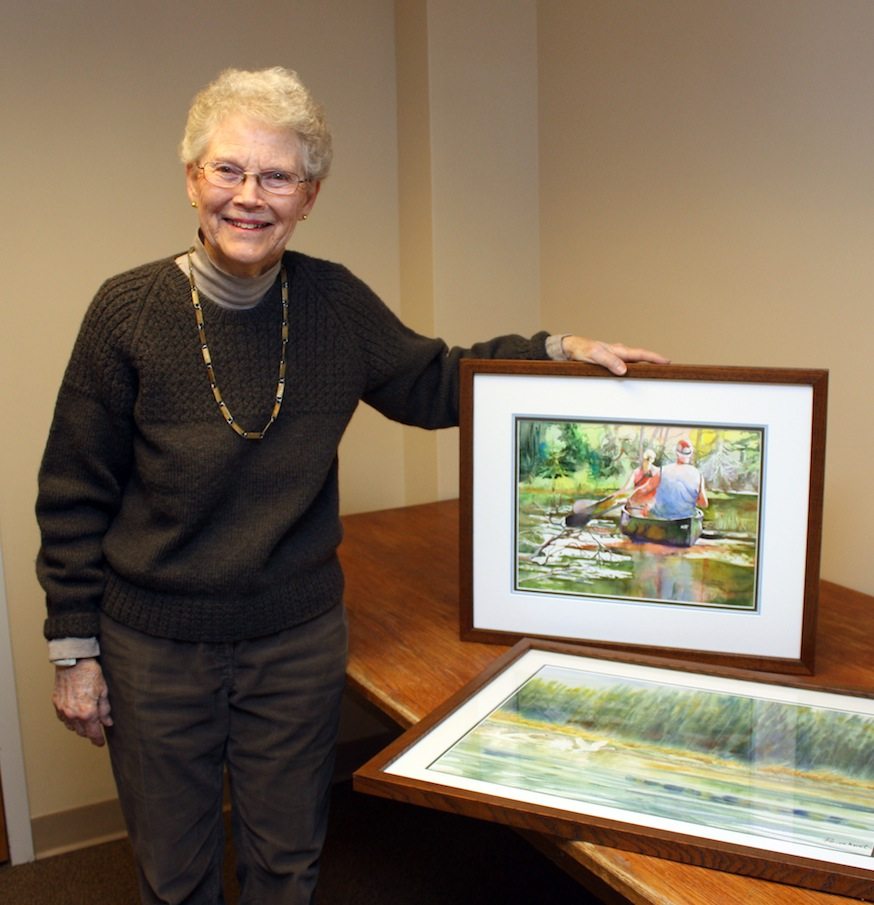
Elise Braun was too ill to attend the Art Center event. When I spoke (click HERE to watch the video), I thought she was listening via Skype, but it turned out the Skype connection failed. She had to wait until the day after the event to hear about it in person through Gil Myers and her friend, Deb Clark, a nurse. Both shared how happy Elise was to know that her work was complete. In Clarke’s words,
It was a treasured time (as Elise) listened, looked at photos, and asked questions with a smile from ear to ear.Braun said:
This final installation was the most celebrated. Bennington Hospital really outdid themselves. How great (it was that) people heard about Dr. Sternberg’s work that inspired Gil and me.Braun died peacefully just a few days later. Like a marathon runner, she had pushed herself through to the project’s finish.
When I heard of Elise Braun’s passing, I was reminded of one of my first patients when I was a young medical student. My patient who was near the end, seemed well enough when I bid her good-bye for the weekend, and told her that I would see her on Monday. She smiled quietly and said she was looking forward to seeing her son that weekend, and thought that this would be her final good-bye to me. When I returned on Monday, her bed was empty and the nurses told me that she had died quietly and at peace shortly after her son had visited. This was my first experience with a patient waiting to die until a loved one visited or a special event in their lives was accomplished – a wedding, a birth, a graduation.
Many healthcare professionals have had such experiences. I have had them in my own family. When my mother was dying of cancer, she waited for my aunt, who with my uncle were driving back to Montreal as fast as they could from their winter home in Florida. My mother had slipped into unconsciousness before they arrived and we all thought they would get there too late. But when my aunt – my mother’s sister, entered the hospital room, my mother raised herself up on the bed with all her strength and called out my aunt’s name. Then she slipped back into unconsciousness and died a few days later.
I couldn’t help but feel that Elise Braun waited for her life’s mission to be complete before allowing herself to slip away. Gil Myers and Deb Clark both thought that it was so. I would like to think that my words and my book played a small part in helping her to achieve that mission, which gave her a sense of peace and calm and fulfillment that her job was done.
That would be the greatest satisfaction any author could hope for.
Lasting Art, Part 1
I felt surreal, floating, like watching myself in a play at the Susan Sebastian Foundation capstone event, celebrating placement of original artwork in virtually every patient room in every hospital in Vermont. It was hard to wrap my mind around the idea that my book, Healing Spaces had helped to inspire this accomplishment.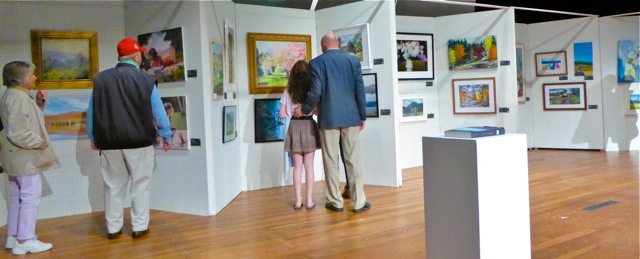
I had been invited to speak at the art show and reception at the Southern Vermont Art Center, celebrating the purchase of the last paintings for the last hospital – the Southwestern Vermont Heath Center (Click HERE to watch the video). The SVHC event organizer, Ashley Jowett picked me up at the lovely old Inn in Manchester where we were staying, and drove me to the venue. It was a rainy day and as we wound our way up the mountain road to the Center, I glimpsed statues of all sorts in the field at the base of the hill and scattered through the dripping woods: a larger-than-life shiny metal horse, oddly shaped metal tubes, a twisted black metal wire sculpture of fighting wolves. 
We arrived at a clearing in the woods where several frame buildings stood in a circle, and Ashley dropped me off at the center one. Lining the walls of the hallway and on the brightly lit stage in the barn-like auditorium, were the one hundred pieces of original art that had been selected by a jury of artists, healthcare and hospital professionals. Fifty-four will be placed in rooms at SVHC, and the rest were available for sale to benefit the Art Center – a win-win for the patients, their families and the artists of Vermont.
I was in awe. When you write a book you never know the impact it will have – the words could just disappear into the ether. But here was a project that took my words and put them into practice across a whole state. Completely mind-blowing!
To be continued…
